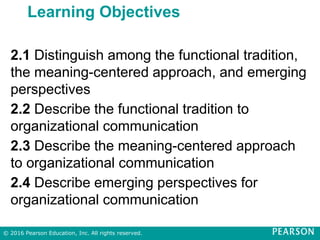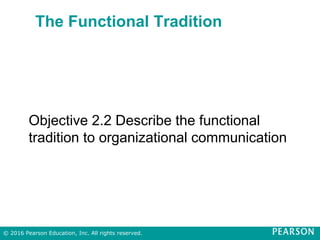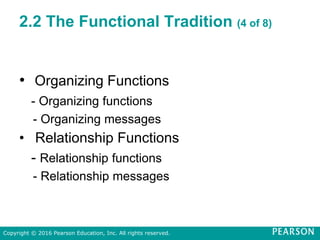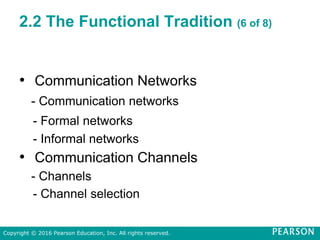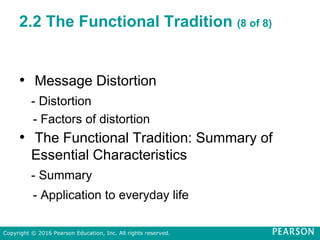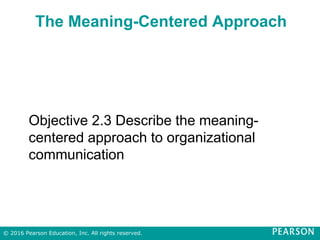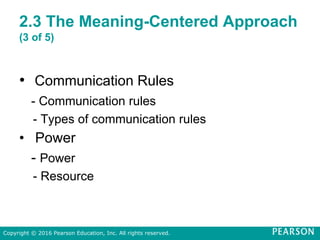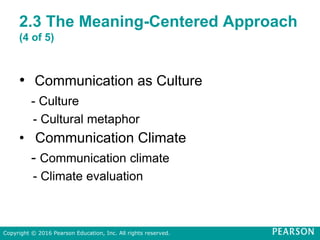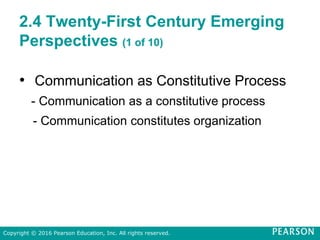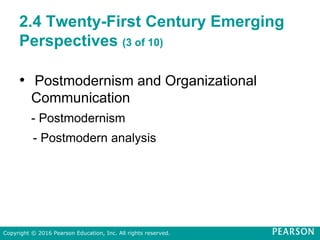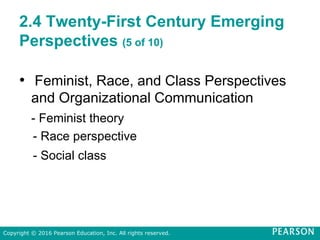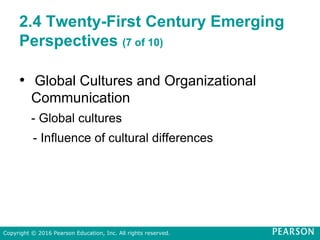This document outlines different perspectives on organizational communication: the functional tradition, meaning-centered approach, and emerging perspectives. The functional tradition views communication as achieving organizational goals. The meaning-centered approach sees communication as constituting organizations through processes like socialization and culture. Emerging perspectives examine how communication constitutes organizations and is shaped by factors like technology, globalization, and power structures related to gender, race, and class.

